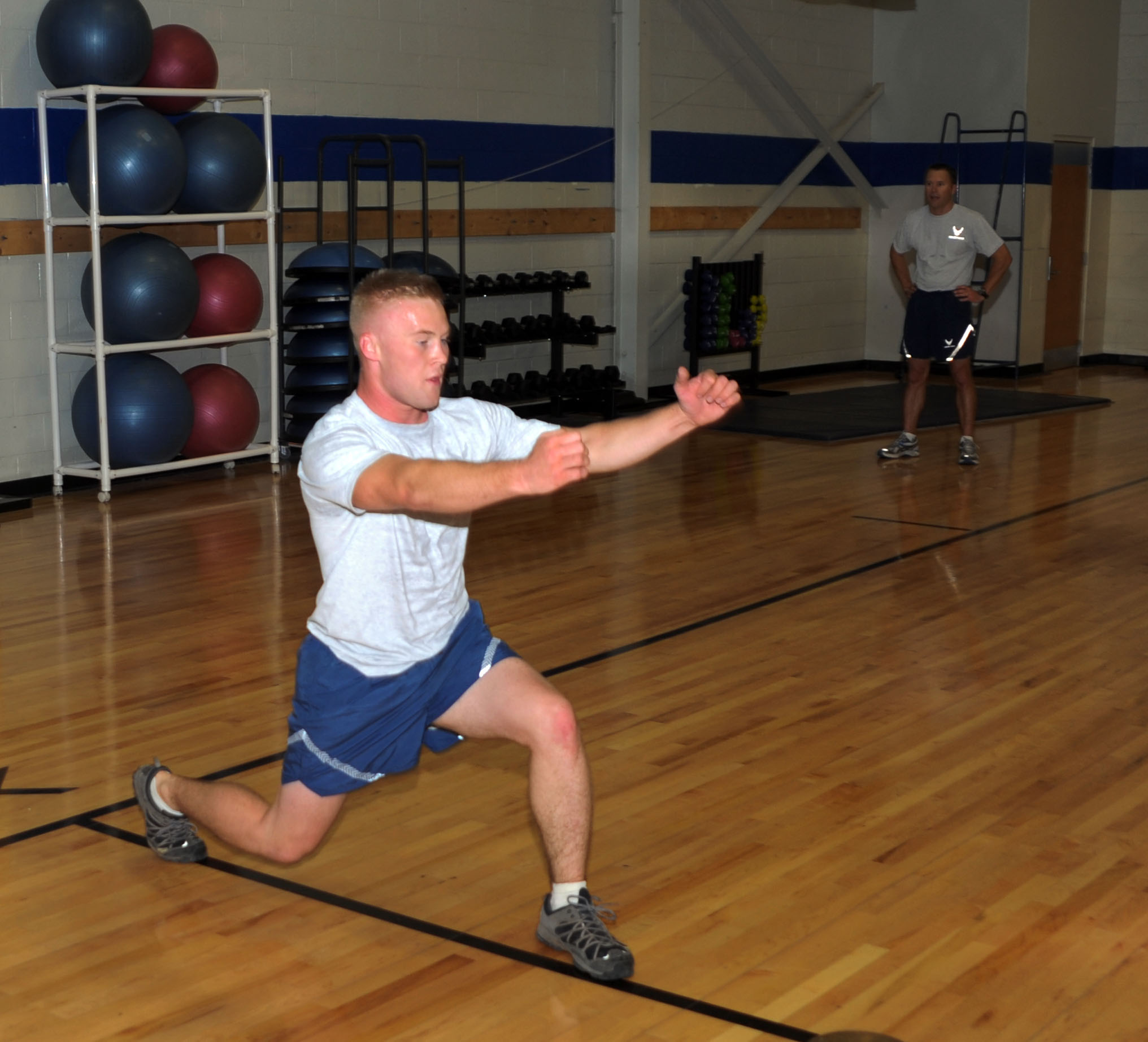Lunge (exercise) on:
[Wikipedia]
[Google]
[Amazon]
 A lunge can refer to any position of the human body where one leg is positioned forward with knee bent and foot flat on the ground while the other leg is positioned behind. It is used by athletes in
A lunge can refer to any position of the human body where one leg is positioned forward with knee bent and foot flat on the ground while the other leg is positioned behind. It is used by athletes in
 Modern yoga includes several lunge-related
Modern yoga includes several lunge-related
 A lunge can refer to any position of the human body where one leg is positioned forward with knee bent and foot flat on the ground while the other leg is positioned behind. It is used by athletes in
A lunge can refer to any position of the human body where one leg is positioned forward with knee bent and foot flat on the ground while the other leg is positioned behind. It is used by athletes in cross-training
Cross-training is athletic training in sports other than the athlete's usual sport. The goal is improving overall performance. It takes advantage of the particular effectiveness of one training method to negate the shortcomings of another.
In gen ...
for sports, by weight-trainers as a fitness exercise, and by practitioners of yoga
Yoga (; sa, योग, lit=yoke' or 'union ) is a group of physical, mental, and spiritual practices or disciplines which originated in ancient India and aim to control (yoke) and still the mind, recognizing a detached witness-consciou ...
as part of an asana
An asana is a body posture, originally and still a general term for a sitting meditation pose,Verse 46, chapter II, "Patanjali Yoga sutras" by Swami Prabhavananda, published by the Sri Ramakrishna Math p. 111 and later extended in hatha yoga ...
regimen.
In contrast to the split squat exercise, during the lunge the rear leg is also activated.
Strength training
Lunges are a good exercise for strengthening, sculpting and building several muscles/muscle groups, including the quadriceps (or thighs), thegluteus maximus
The gluteus maximus is the main extensor muscle of the hip. It is the largest and outermost of the three gluteal muscles and makes up a large part of the shape and appearance of each side of the hips. It is the single largest muscle in the human ...
(or buttocks) as well as the hamstrings
In human anatomy, a hamstring () is any one of the three posterior thigh muscles in between the hip and the knee (from medial to lateral: semimembranosus, semitendinosus and biceps femoris). The hamstrings are susceptible to injury.
In quadrupe ...
. A long lunge emphasizes the use of the gluteals whereas a short lunge emphasizes the quadriceps. The lunge is a basic movement that is fairly simple to do for beginner athletes.
A lunge can be performed using bodyweight alone. However, weight trainers may seek to increase the difficulty using either dumbbells or kettlebells
In weight training, a kettlebell is a cast-iron or cast-steel ball with a handle attached to the top (resembling a cannonball with a handle). It is used to perform many types of exercises, including ballistic exercises that combine cardi ...
held in each hand, or a barbell held atop the neck and shoulders. Grip strength may be an issue with the dumbbell lunge so practitioners may prefer the barbell lunge.
As a variation, plyometric lunges (also known as split squat jumps) can be performed by jumping explosively between lunge positions.
With resistance training it's not recommended to do forward lunges in place, this is due to the shear force
In solid mechanics, shearing forces are unaligned forces acting on one part of a body in a specific direction, and another part of the body in the opposite direction. When the forces are collinear (aligned with each other), they are called t ...
it can place on the rear knee once the front leg no longer provides support.
Yoga
 Modern yoga includes several lunge-related
Modern yoga includes several lunge-related asana
An asana is a body posture, originally and still a general term for a sitting meditation pose,Verse 46, chapter II, "Patanjali Yoga sutras" by Swami Prabhavananda, published by the Sri Ramakrishna Math p. 111 and later extended in hatha yoga ...
s such as the Virabhadrasana
Virabhadrasana ( sa , वीरभद्रासन; IAST: Vīrabhadrāsana) or Warrior Pose is a group of related lunging standing asanas in modern yoga as exercise commemorating the exploits of a mythical warrior, Virabhadra. The name of the ...
warrior poses I and II, and others whose names vary in different yoga traditions. Examples of Sanskrit
Sanskrit (; attributively , ; nominally , , ) is a classical language belonging to the Indo-Aryan branch of the Indo-European languages. It arose in South Asia after its predecessor languages had diffused there from the northwest in the late ...
names include Anjaneyasana ( Anjaneya's pose), Ashwa Sanchalanasana (equestrian pose), and Ardha Mandalasana (half circle pose). Depending on the lineage and circumstances, the back knee can be down or up, the toes may be tucked or untucked, and the arms may be in any number of positions.
Lunges are often incorporated into Surya Namaskar, a flowing sequence of asanas used as a warm-up and in vinyasa styles of yoga to connect asanas into aerobic exercise sequences.
See also
*Lunge (fencing)
The lunge is the fundamental footwork technique used with all three fencing weapons: foil, épée and sabre. It is common to all contemporary fencing styles.
The lunge is executed by kicking forward with the front foot, and pushing the body fo ...
* Partial squat
Squatting is a versatile posture where the weight of the body is on the feet but the knees and hips are bent. In contrast, sitting involves taking the weight of the body, at least in part, on the buttocks against the ground or a horizontal object. ...
References